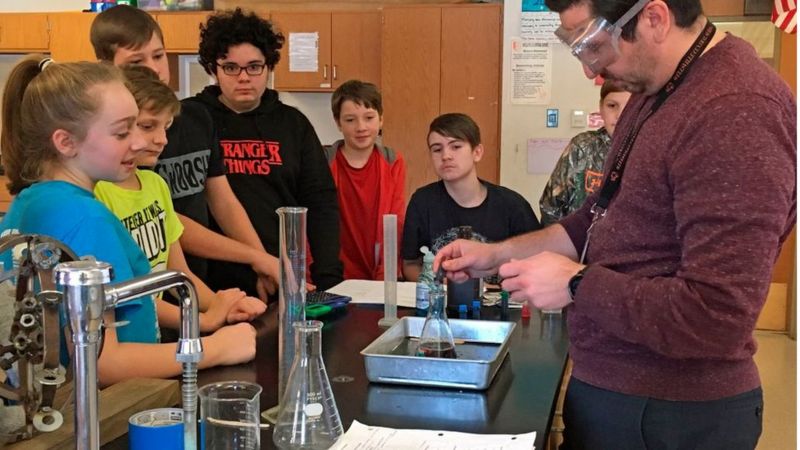8 expressways by 2041 – to boost regional connectivity
The government is formulating a mega plan to construct eight expressways connecting the country's seaports and a few land ports to develop strong connectivity with neighbouring countries.
The Roads and Highways Department, which is preparing the plan, says five expressways would be constructed to connect the southern and northern regions of the country while three others will connect the eastern and western regions.
The total length of the proposed four-lane expressways to be constructed on new routes instead of the existing ones will be 2,352 kilometres, officials say, adding only long-distance passenger and freight vehicles will be allowed to use the expressways paying tolls.
Dhaka has been left out of the proposed expressways.
The construction cost of the Dhaka-Mawa-Bhanga Expressway, the only expressway so far built in Bangladesh, was Tk200 crore per kilometre. From this count, the total cost of constructing the proposed 2,352 kilometres of expressways will be Tk4,70,400 crore at the current market price. The cost is likely to increase manifold in the future as prices of construction materials and land will most likely increase.
As a result, financing the construction of this huge network of expressways is likely to be a major challenge, feel people concerned.
Even though some experts are doubtful whether all the proposed expressways will bring about economic benefits to the country, those involved in formulating the master plan say these throughways will be the mainstay of Bangladesh's economy in the future.
Mentioning that many countries and regions in the world, including Dubai, are now reaping the benefit of well-planned-out road infrastructure projects implemented earlier, they say the foundation of Bangladesh's economic backbone – the proposed expressways – needs to be laid now taking lessons from other parts of the world.
As the expressways would allow long-distance vehicles to reach their destinations bypassing Dhaka's traffic congestion, it would reduce traffic pressure on the capital as well, they further observe.
The first expressway to connect the northern and southern regions would be constructed from Sylhet's Tamabil land port to Cox's Bazar's Gundum. It will also connect Chattogram and Matarbari seaports.
Another expressway from Mymensingh's Gobrakura land port will be divided in two parts in Kotalipara, Gopalganj – one will go to Mongla port and another to Payra port. The construction of the second Padma Bridge has been proposed at Manikganj-Rajbari point for this expressway.
The expressway from Bhomra land port in Satkhira will split into two parts at Jaldhaka in Nilphamari – one towards Panchagarh's Banglabandha land port and the other towards Burimari land port in Lalmonirhat.

Meanwhile, in the East and West, an expressway has been proposed from Benapole land port to Cumilla's Laksam that will be connected to the Tamabil-Gundum expressway including a bridge over the River Meghna at Chandpur-Shariatpur point. Another expressway is supposed to connect the Tamabil-Gundum expressway in Brahmanbaria with Chapainawabganj's Sona Masjid land port. One more expressway has been proposed from Tamabil to Joypurhat including a bridge over the River Brahmaputra.
Officials at the Roads and Highways Department said regional connectivity is common in Europe and a few other regions while Asia is still far behind in this regard.
Nevertheless, some Asian countries including those in South Asia have, of late, emphasised building roads and highways eyeing future regional connectivity. Bangladesh also is planning the expressways to keep pace with other Asian countries, they said.
The officials also noted that the government has several other plans for regional connectivity, including Asian Highway Connectivity, South Asian Sub-Regional Economic Cooperation (Sasec) Road Connectivity, and Saarc Connectivity etc.
The new expressways have been proposed considering that using the existing road network of the country for regional connectivity would increase the pressure on the roads and discard economic benefits, they continued.
Officials of the Roads and Highways Department said, a strong connectivity not only strengthens the intra and inter regional trade but also generates higher income and prosperity. Increased connectivity between South and South-east Asia can play an important role in achieving efficiency and enhanced productivity. Transport connectivity along with trade facilitation measures may spur regional trade and commerce by reducing cost of transportation and logistics.
"The routes for the proposed expressways have been selected through survey, although the government is yet to make a final decision in this regard. The list of expressways can be even shorter," Md Zakir Hossain, additional secretary (planning wing) at the Road Transport and Highways Division, told The Business Standard.
He said, "The government wants to elevate Bangladesh to the status of developed countries in 2041. The expressway is being planned keeping that in mind. The construction of some of the expressways is expected to be completed before 2041."
Md Shamsul Hoque, a communication expert and a professor at Bangladesh University of Engineering and Technology (Buet), said, "This is the right time to construct expressways in Bangladesh. If we do not construct expressways now, it would not be possible in the future as Bangladesh's population is huge compared to its land area. So, land should be acquired now."
Some of the neighbouring countries have already built expressways, he mentioned, adding, "There are 11 expressways in Pakistan, 22 in India and 37 in Malaysia. But we have not made any progress in this regard. Our only expressway is the Dhaka-Mawa one."
The government has adopted the strategy to build expressways connecting the northern and southern regions, and eastern and western regions to establish a strong communication system among all parts of the country, said Shamsul Hoque who has worked closely with the government in formulating the expressway master plan.
In India, the master plan for the construction of expressways in the north-south, east-west and peripheral areas was passed 25 years ago, which has been implemented in phases later, the noted communication expert told TBS.
"In Bangladesh, the conditions of national highways have remained like that of local roads as there are markets and other establishments adjacent to the highways and slow-moving vehicles ply them. This is why an outline of expressway construction is required now. Even if these expressways do not yield much economic benefit right away, the benefits will be huge in the future."
The expressway planThe Tamabil-Gundum expressway would be the longest among the proposed expressways with a length of 545 kilometres. It will run from Tamabil to Cox's Bazar via Sylhet, Moulvibazar, Brahmanbaria, Cumilla and Chattogram.
The expressway would be linked with the two countries at the border – India and Myanmar. The Gundum border with Myanmar is expected to create opportunities for greater trade with Asean or Southeast Asian countries.
The expressway would also increase interest among other neighbouring countries to use the Chattogram and Matarbari ports.
The Gobrakura-Payra port expressway would run through Mymensingh, Sherpur, Tangail, Manikganj, Faridpur, Gopalganj, Barishal, Patuakhari, and Baraguna with a length of 375km including the proposed second Padma Bridge in Rajbari-Manikganj point.
Meanwhile, the bridges division is surveying the possibilities of constructing a bridge at Chandpur-Shariatpur point on the expressway. The survey is expected to be completed next year.
The authorities have proposed to connect Gobrakura-Payra port expressway with Mongla port. For this, another 75km expressway from Kotalipara in Gopalganj to Mongla port will be constructed.
The expressway would connect various districts including Rajbari, Faridpur, Madaripur, Gopalganj, Barishal and Patuakhali and Barguna with Mymensingh, Tangail, and Manikganj.
The length of Burimari-Bhomra expressway will be 432km from Lalmonirhat's Burimari land port at Patgram border to Bhomra land port in Satkhira.
It would also connect the northernmost land port of Banglabandha. To this end, another 85km expressway from Banglabandha to Jaldhaka in Nilphamari has been proposed.
According to people concerned, Burimari and Banglabandha land ports are playing an important role in Bangladesh's trade with India, Bhutan and Nepal. The expressway would increase the volume of trade with these countries by connecting these two ports.
With a length of 294km and a bridge over the River Meghna the Benapole-Laksam expressway would reduce the distance of Chattogram with the districts in Khulna division by more than 200 kilometres.
It would be connected with the Gobrakura-Payra port expressway at Faridpur, and with the Burimari-Bhomra expressway in Jashore.
The length of the Sonamashjid-Brahmanbaria expressway would be 310km. It will also be connected with the Tamabil-Gundum expressway. The expressway will reduce the distance of Rajshahi and Rangpur divisions with Chattogram and Sylhet divisions.
The Joypurhat to Tamabil expressway would be connected to Gobrakura-Payra port and Burimari-Bhomra expressways in Mymensingh and Joypurhat respectively with a length of 226km.
The plan is being prepared under the Technical Assistance for the Sub-Regional Road Transport Project Preparatory project.
Arguments over economic viabilityThere are doubts whether all of the proposed eight expressways will yield economic benefits. Even though everyone concerned is quite sure the 545km Tamabil-Gundum Expressway will be economically viable for Bangladesh because of its location to use port facilities and trade and commerce facilities, whether the 432km Burimari-Bhomra Expressway will bring any economic benefits remains questionable.
Asked about the economic benefits of the proposed expressways for Bangladesh, Dr Shamsul Haque of Buet said in building expressways, countries around the world attach more importance to strategic reasons than the cost-benefit issue. "Had the cost-benefit analysis been taken into consideration, many expressways in Australia would not have been built. This is because no car can be seen on some expressways in the country even in 30 minutes."
Developed countries build expressways taking into account the integrity of the State, its economic development, regional connectivity, and the future development of the region concerned, he noted, adding not all expressways become popular in any country.
He further said the Burimari-Bhomra Expressway would facilitate easy communication between the north-western part and the south-western part of the country. "This will also facilitate road communication among different states of neighboring India. The expressway will ease building connectivity of Nepal and Bhutan with other countries in the region." Because of their geographical locations, such expressways are likely to benefit Bangladesh in the future, he continued.
At the beginning, the metro rail projects in Dubai yielded little benefits compared to their costs, Shamsul Hoque said, adding, "As the population of the city was only 55 lakh, there was not much hope of getting benefits immediately. But now Dubai has seven times more tourists than its population. They are now reaping the benefits of the well-planned metro projects."
Mohammad Yunus, senior research fellow at the Bangladesh Institute of Development Studies (BIDS), said Bangladesh needs to construct these expressways in its own interest of strengthening communication between different parts of the country.
Not all expressways will bring about the same economic benefits if regional connectivity is taken into account, he observed, adding, "But in overall consideration, the country is likely to benefit from all the expressways in the long run. Even though some expressways aimed at establishing regional connectivity will not be economically feasible for the country, they might help to improve trade as well as diplomatic relations.
"Hence, the potential economic benefits should not be the only consideration in the case of the proposed expressways. The other factors should also be taken into account." He, however, suggested building the expressways on existing roads considering the construction costs and a scarcity of land in some areas.
SOURCE:
https://www.tbsnews.net/bangladesh/infrastructure/8-expressways-2041-boost-regional-connectivity-335152








